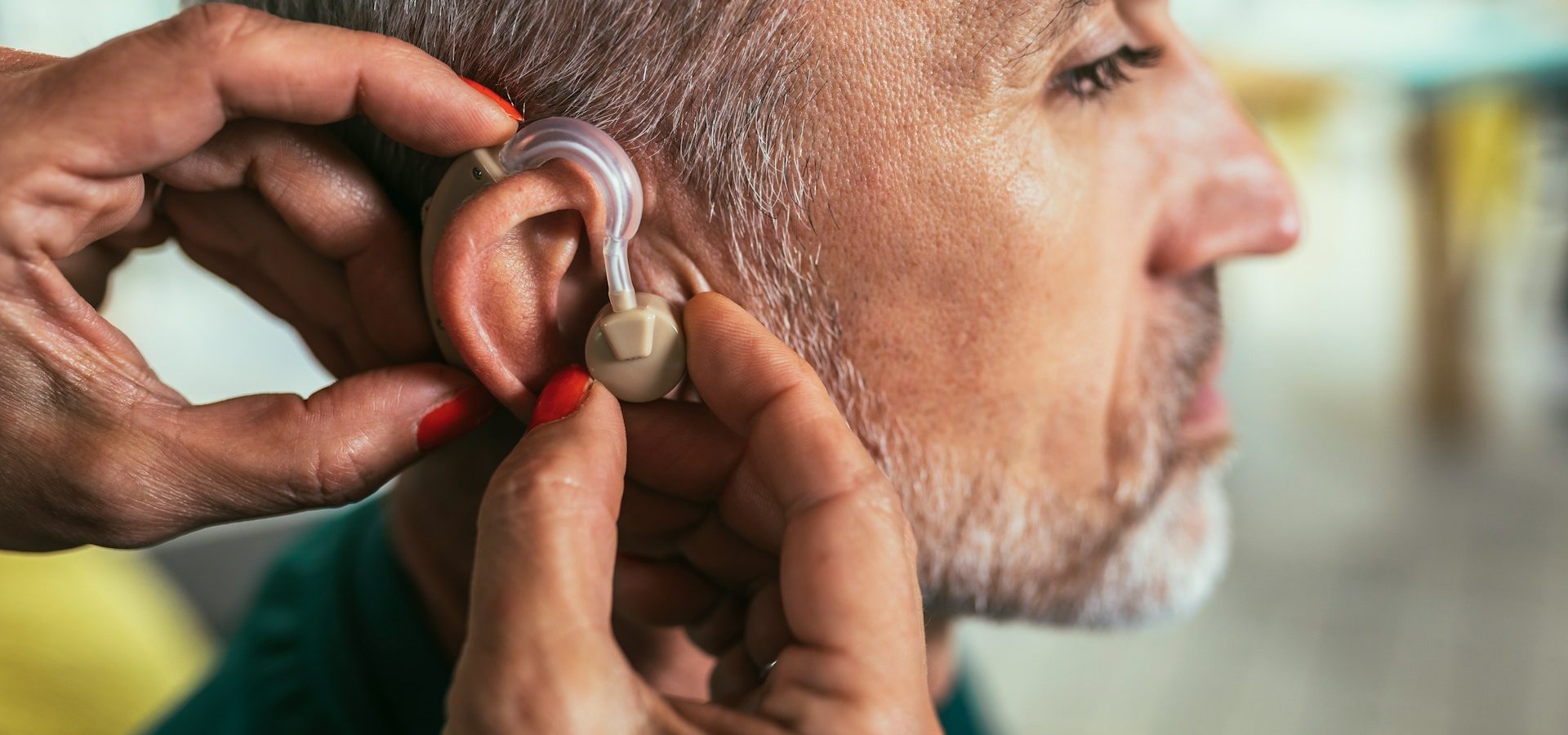Menu

Hearing loss is a common issue that affects millions of people worldwide. It not only impacts communication but can also lead to social isolation, depression, and a decreased quality of life. Thankfully, advances in technology have led to the development of sophisticated hearing aids that can significantly improve hearing experiences.
This blog post will delve into the latest innovations in hearing aid technology and how they can benefit individuals struggling with hearing loss. By staying informed, you can make educated decisions regarding the best hearing solution for you.
Ready to explore the latest hearing aids? Read on as we help you find the perfect solution for your unique hearing needs.
Understanding the Latest Advances in Hearing Aid Technology
As technology in our everyday lives continues to advance rapidly, we’re constantly introduced to new ways that it can improve our overall well-being. One realm that has seen significant progress in recent years is hearing aid technology. These advancements have provided individuals with hearing loss the opportunity to experience better, more personalized hearing solutions.
In this article, we will explore some of the most recent advancements in hearing aid technology. These innovations aim to cater to individual users’ needs, providing a comprehensive listening experience that enhances overall quality of life.
Digital Signal Processing for Improved Sound Quality
One of the most significant advancements in hearing aid technology is the ability to process and deliver clearer, more accurate sound. Digital Signal Processing (DSP) is a feature found in modern hearing devices that allows for the manipulation of complex sound patterns. This results in enhanced speech clarity and reduced background noise.
Digital signal processing works by transforming incoming sound signals into a digital format, which enables the hearing aid to adjust automatically to different listening environments. This facilitates a more natural, comfortable listening experience. With DSP, users can expect superior sound quality, superior noise reduction, and customizable settings that adapt to individual preferences.
Rechargeable Batteries for Convenient Usage
One major innovation in hearing aid technology is the introduction of rechargeable batteries. Traditional hearing aids have non-rechargeable batteries, requiring frequent battery replacements which can be inconvenient and potentially costly.
Many modern hearing aids now feature built-in rechargeable lithium-ion batteries. This provides users with a hassle-free, eco-friendly power option. By simply placing the hearing aids in their charging dock at night, users can enjoy a full day of use without worrying about running out of power. Rechargeable batteries also reduce electronic waste, providing an environmentally friendly alternative to disposable batteries.
Bluetooth Connectivity for Seamless Integration
Another groundbreaking advancement in hearing aid technology is Bluetooth connectivity. By integrating Bluetooth capabilities into hearing devices, users can enjoy a seamless connection between their hearing aids and various electronic devices, such as smartphones, tablets, and televisions.
Bluetooth hearing aids can be connected to a dedicated app, enabling users to adjust settings and personalize their listening experience directly from their smartphones. This level of control allows for optimized listening experiences based on individual preferences and environments.
Moreover, Bluetooth-enabled hearing aids support direct audio streaming from a range of devices, making it easier to enjoy phone calls, music, podcasts, and other audio sources without external accessories or intermediary devices.
Innovative Designs and Discreet Styles
Recent advancements in hearing aid technology have resulted in the development of more discreet, attractive styles that offer users a suitable solution for their cosmetic concerns. Modern hearing aid designs include behind-the-ear (BTE), in-the-ear (ITE), in-the-canal (ITC), completely-in-the-canal (CIC), and invisible-in-the-canal (IIC) devices.
Behind-the-ear devices now offer slim and light designs that fit securely on the ear, providing excellent sound quality without drawing attention. In-the-ear solutions provide secure fits and a natural listening experience due to their placement within the ear. They’re also fully-customizable and can house additional features such as telecoils and directional microphones.
Completely-in-the-canal and invisible-in-the-canal devices are custom-molded to the wearer’s ears and sit deeper within the ear canal, ensuring the utmost discretion. They are an excellent choice for individuals who are conscious about the appearance of traditional hearing aids and seek a more natural, blended look.
Staying Informed and Choosing the Right Hearing Aid
Hearing loss affects people differently, and it’s crucial to stay informed about the latest innovations in the hearing aid industry. This allows individuals to select a solution that will best meet their unique listening needs and preferences.
With a wide range of capabilities, styles, and features available, it is recommended to consult with a qualified hearing care professional to make an informed decision. They can help you determine your specific needs, assess the most suitable technology, and ensure optimal comfort with the chosen hearing aid solution.
Conclusion
The advancements in hearing aid technology have made significant strides in recent years, and today’s devices are designed to cater to individual needs and preferences. From digital signal processing for improved sound quality to convenient rechargeable batteries and customizable settings via Bluetooth-enabled devices, there’s a wide array of technology to explore.
Choosing the right hearing aid can greatly impact your overall well-being and quality of life. By understanding the latest innovations and working with a qualified hearing care professional, you can make an informed decision that meets your unique needs.
Book a consultation with the team at Fraser Valley Beltone to discover the best hearing aids in Canada tailored to your specific requirements.
Share Post
Facebook
Twitter
LinkedIn
Email
Reddit
Pinterest
